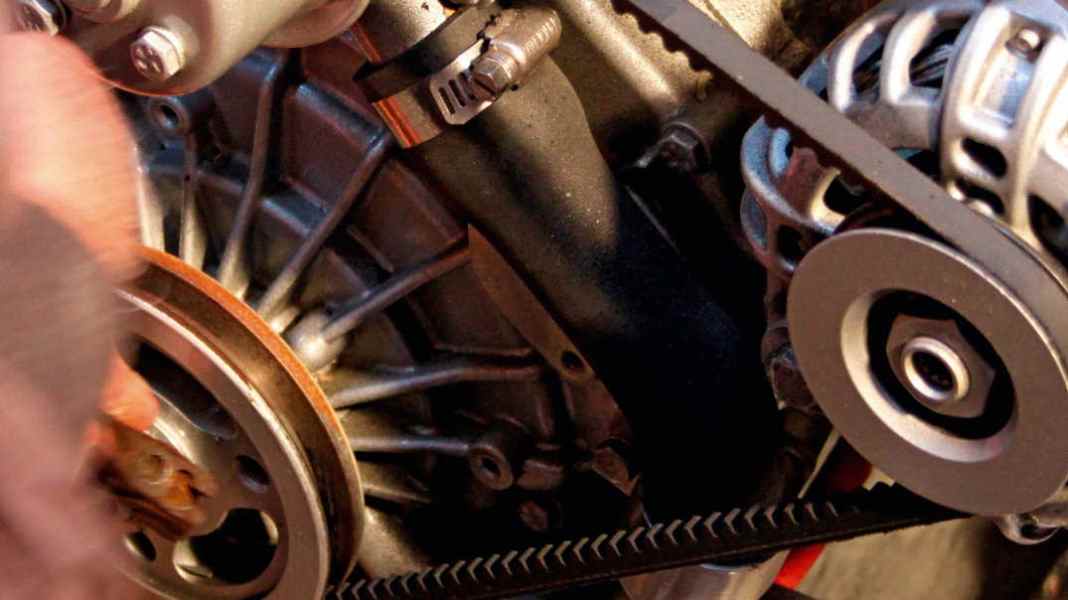
The charging technology is to blame for the lack of charging power. Although everything is available on the built-in diesel with the alternator to charge a battery, the devil is in the detail, and older yachts are often still equipped ex shipyard in such a way that the engine cannot be used as an effective power source.
The decisive factor is the charging voltage
The charging voltage of the alternator on the diesel is usually far below the values recommended by battery manufacturers.
Lead-acid batteries automatically regulate the charging current to the permissible value if the correct voltage is applied to the battery terminals. The emphasis is on "if". For gel batteries this is 14.6 volts, AGM types even need 14.7 volts. However, the standard regulators are only set to voltages between 13.8 and 14.2 volts. This is due to their origin in the automotive sector. There, the alternator supplies all the power while driving. When the engine is not running, hardly any energy is consumed. The vehicle battery therefore only needs to be maintained in its state of charge; this is known as buffer operation.
A voltage of 13.8 volts is just right for this. At higher voltages, a full battery would start gassing and be damaged on long journeys.
On yachts, however, this is known as cyclical operation: A large amount of power is regularly drawn from the battery for the operation of lights, cooling, radio, autopilot and navigation, and this should then be recharged in as short a time as possible. This requires higher charging voltages.
Power distribution is often not ideal
The problem is exacerbated by the simple power distribution. Many shipyards used to use isolating relays or diode distributors to connect a consumer bank to the alternator in addition to the starter battery.
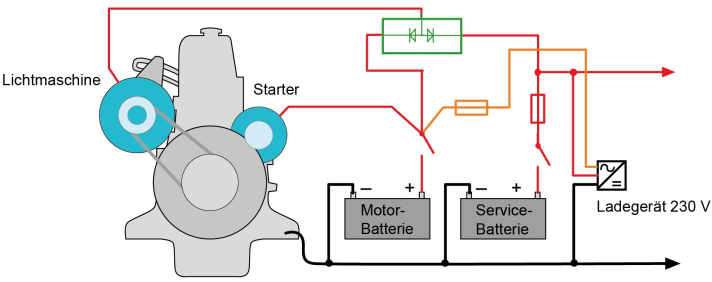
Isolating relays and diodes



Typical for such installations is a charging behaviour with the current curve of a simple W characteristic.
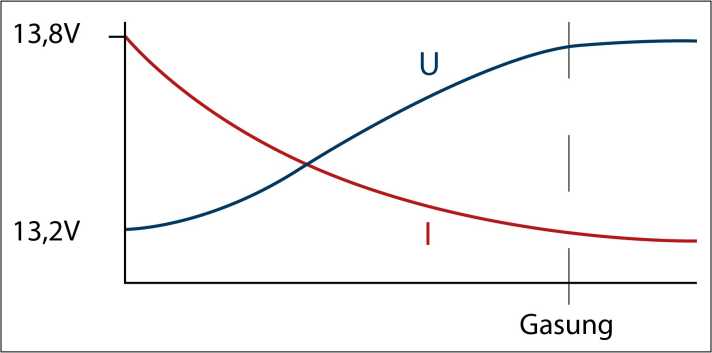
The full power of the generator is practically only available when the battery is completely discharged; even when half discharged, the voltage of the batteries rises quickly and the charging current drops sharply.
The enormous difference to the shore power charger is due to the characteristic curve. The 230-volt device works with an IUoU characteristic curve. The battery initially receives as much current as the charger can supply. This is the "I" phase, internationally known as "bulk". The battery voltage increases more or less quickly depending on the state of charge. When it reaches the maximum value for the charging voltage, the first "U" phase (absorption) begins: the charger limits the voltage and the current - now specified by the battery - decreases.
To prevent gassing in the long term, the voltage is reduced to the so-called maintenance value after a certain time. This is the second "U" phase, internationally known as "float".
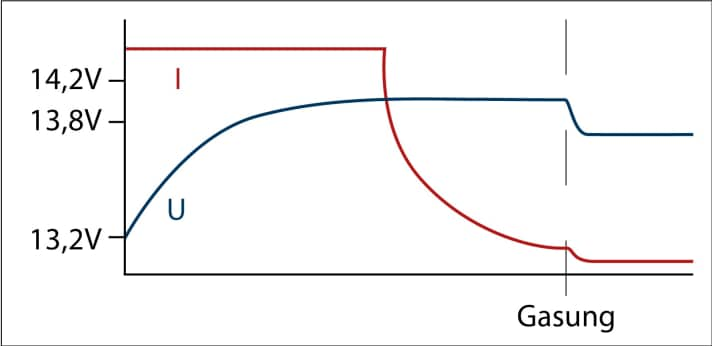
However, this process is only possible with expensive high-performance regulators, which cannot be combined with every alternator.
Outwitting the alternator with a B2B charger
It is much easier to trick the regulation of the alternator. This is exactly what so-called alternator-to-battery or battery-to-battery chargers, also known as charge boosters or B2B chargers, do. While the former are connected directly to the alternator and have separate outputs for the starter and consumer, battery-to-battery chargers are simply connected to the engine battery. The engine electrics remain as supplied by the manufacturer: The starter battery is connected directly to the starter motor and alternator, eliminating the need for any isolating relays or diode distributors.
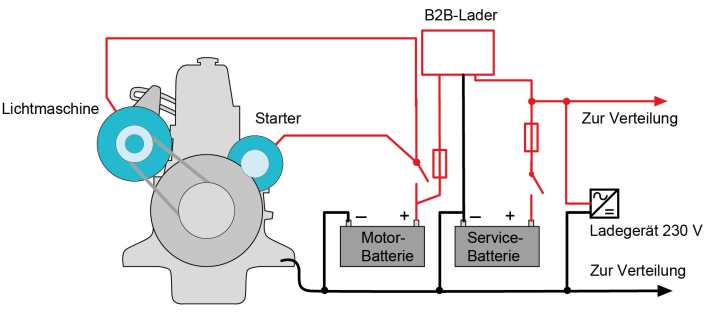
Both systems ensure that the output voltage of the alternator is reduced to around 13.0 volts. This is still above the open-circuit voltage of the starter battery - so it is not under load. However, the alternator regulator practically always recognises an empty starter battery and ensures maximum power output. The electronics of the B2B charger recognise whether it is sufficiently charged and whether charging current is available; only then does the integrated voltage converter go into operation and provide the mains battery with the optimum charging voltage.
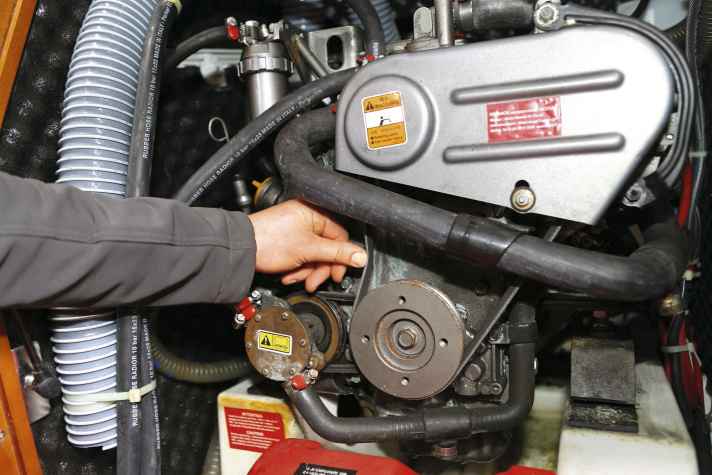
Retrofitting a B2B charger is simple, as hardly any new cables need to be laid. Especially if, as in our case, an automatic cut-off relay was installed. Then the B2B charger can practically take over its position and only an additional earth cable is required.
If a diode distributor is present, this must be removed so that the engine battery is connected directly to the alternator, then the wiring of the B2B charger is identical.
It is ideal if the charger is installed close to the consumer battery, as it automatically compensates for the voltage drop on the supply line. In our case, however, there was not enough space. In addition, the redundant cable from the shore power charger to the starter battery could also be used. The chosen device from Sterling Power works in both directions, i.e. when the consumer battery is charged via shore power, the B2B charger automatically takes care of the engine battery. This means that a 40 square millimetre cross-section is available and the voltage drop is negligible.
One problem with installation in the engine compartment can be the temperature; the devices work extremely efficiently and generate little waste heat. However, if the engine heats up the surroundings too much, it could still get too warm and the B2B charger would shut down. We will monitor the temperatures and, if in doubt, relocate the device in winter.
The right dimensioning
The charger should be dimensioned so that it delivers 60 to 75 per cent of the rated output of the alternator.
With an 80-amp alternator, you should therefore choose a charger with a maximum charging current of 60 amps. A charger that is too small will not utilise the full potential of the alternator. A charger that is too powerful draws more current from the starter battery than the engine can recharge. This causes the input voltage to drop and the B2B charger reduces the output or switches off completely. As a result, the entire charging current of the alternator flows into the starter battery and its voltage rises again until the B2B charger wakes up again and continues to charge the consumer battery. The process is repeated within a few minutes and significantly delays the charging process.
Such on-off oscillations can also occur with a correctly dimensioned B2B charger when the engine is idling and the alternator is not delivering full power, but are then not critical.
If there is no model with the right power, several chargers can be connected in parallel. Or you can choose a more powerful version that can be throttled. With Sterling Power, this is possible using the optional remote control. Other devices, such as Victron's new Orion XS, can be adapted to the alternator's performance via an app, but do not work bidirectionally.
We designed the charger rather conservatively and chose a 40-amp variant. To get the maximum out of the alternator, it would also have been possible to install a 70-amp unit and throttle its output to 85 per cent.
Even the 40-series B2B charger significantly improves the energy balance; the maximum current of the alternator is capped at around 38 amps, but it delivers this not just for a few minutes, but continuously until the battery has reached around 80 per cent of its capacity.
Even when the diesel is idling, between 35 and 38 amps are available. The charging process could be further improved by switching to lithium batteries. The alternator is already ready for this.
How to retrofit a B2B loader
Installation is simple, cable cross-sections and fuses must comply with the specifications.
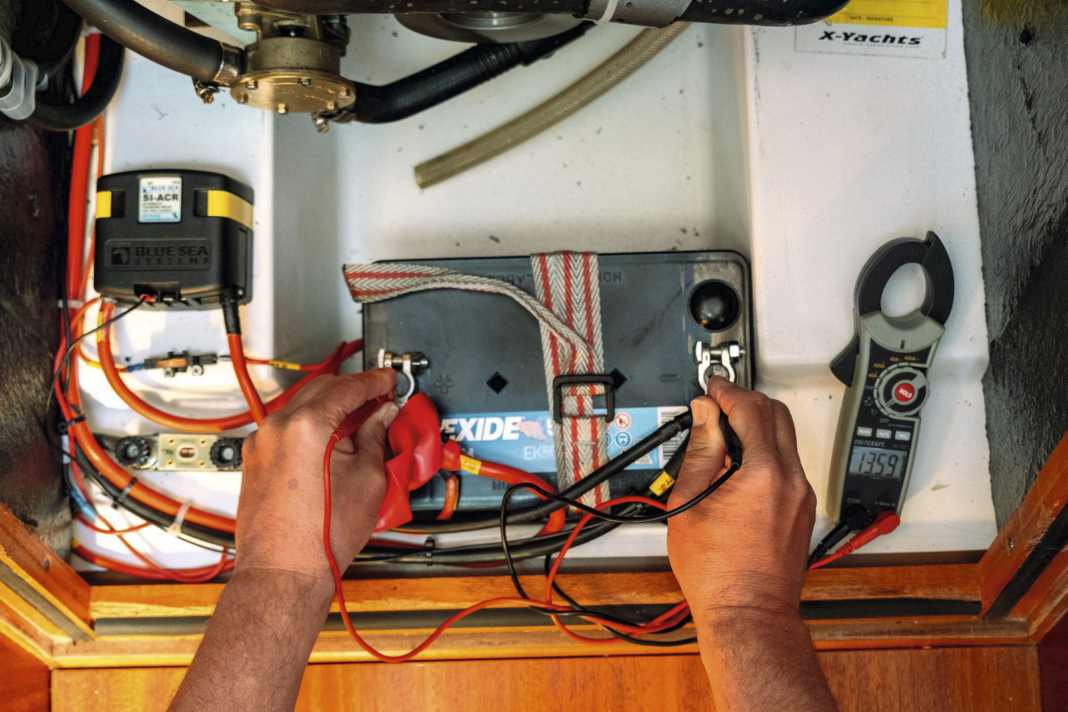





Seven B2B loaders at a glance
There are plenty of charging boosters for 12-volt systems, a selection of current devices
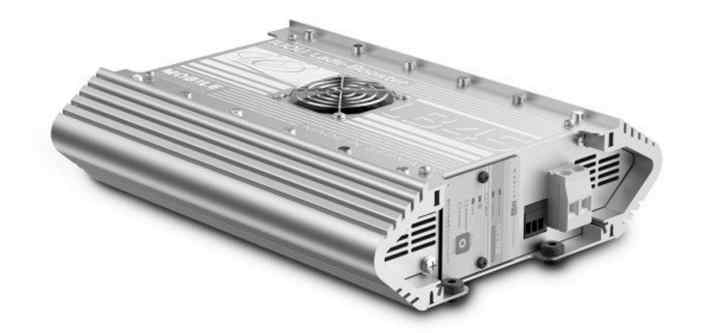
- Model Charging booster
- Price From 469 Euro
- Input current/reducible 30A; 50A/no
- Characteristic curve, lead-acid battery IUoU
- Supported battery types Wet, AGM, Gel, LiFePo4
- Temperature sensor Battery
- Remote control/display Yes
- Activation D+, voltage
- Special features Voltage sensor
- Bidirectional charging No

- Model Perfect Power
- Price From 205 Euro
- Input current/reducible 10A; 20A; 40A/no
- Characteristic curve, lead-acid battery IUoU
- Supported battery types Wet, AGM, gel
- Temperature sensor Battery (optional)
- Remote control/display No
- Activation D+, ignition
- Special features None
- Bidirectional charging No
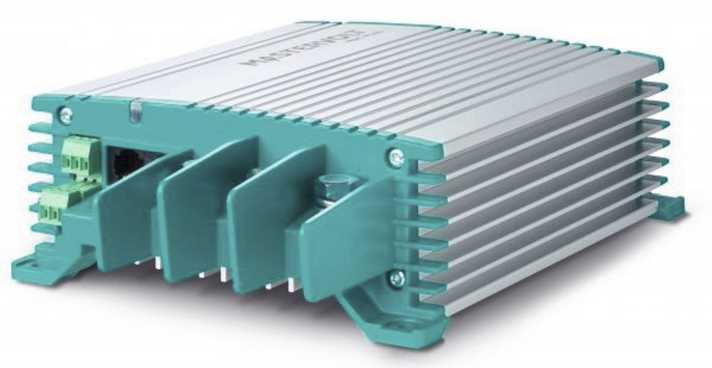
- Model Mac Plus
- Price 655 Euro
- Input current/reducible 50A/adjustable
- Characteristic curve, lead-acid battery IUoU
- Supported battery types Wet, AGM, Gel, LiFePo4
- Temperature sensor Battery
- Remote control/display Optional
- Activation Tension
- Special features Voltage sensor, Czone bus
- Bidirectional charging No
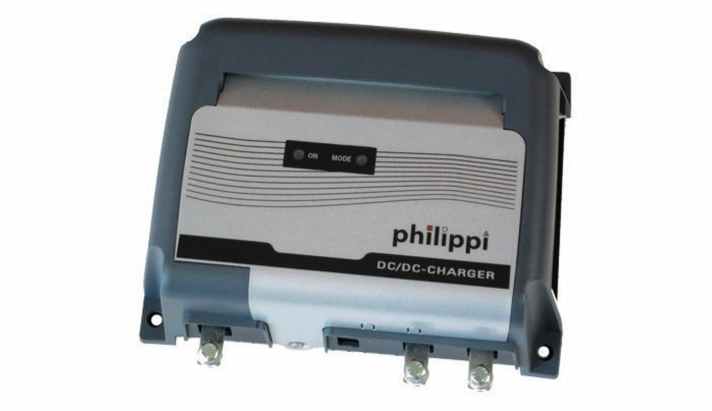
- Model DCE 12
- Price 595 Euro
- Input current/reducible 65A/regulated
- Characteristic curve, lead-acid battery IUoU
- Supported battery types Wet, AGM, Gel, LiFePo4
- Temperature sensor Battery, Lima
- Remote control/display Optional, via bus
- Activation Tension
- Special features P-Bus, configurable
- Bidirectional charging No
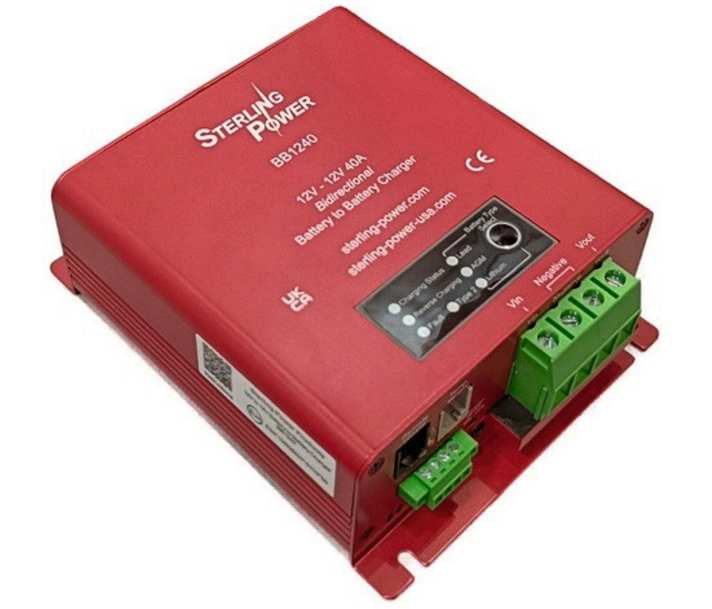
- Model Saturn series
- Price From 249 Euro
- Input current/reducible 10-200A/via remote control
- Characteristic curve, lead-acid battery IUoU
- Supported battery types Wet, AGM, Gel, LiFePo4
- Temperature sensor Battery
- Remote control/display Optional
- Activation Ignition, voltage, vibration
- Special features None
- Bidirectional charging Yes, half power
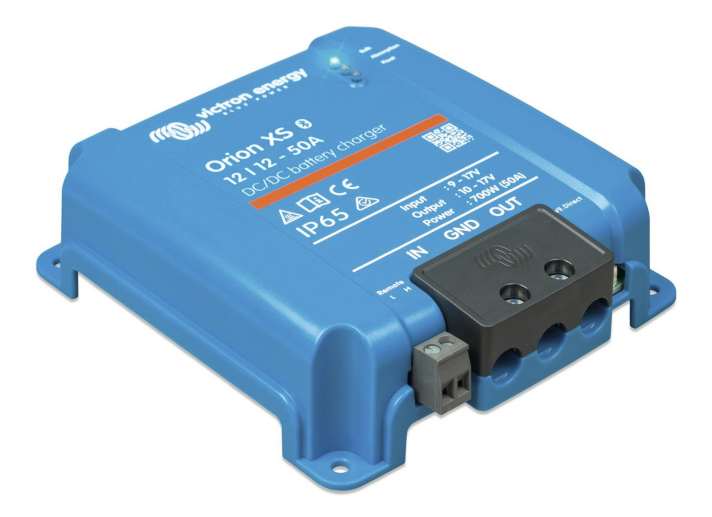
- Model Orion XS
- Price 417 Euro
- Input current/reducible 50A/via app
- Characteristic curve, lead-acid battery IUoU
- Supported battery types Wet, AGM, Gel, LiFePo4
- Temperature sensor Battery
- Remote control/display Via app, via bus
- Activation Ignition, voltage, BMS
- Special features Voltage sensor via VE bus
- Bidirectional charging No
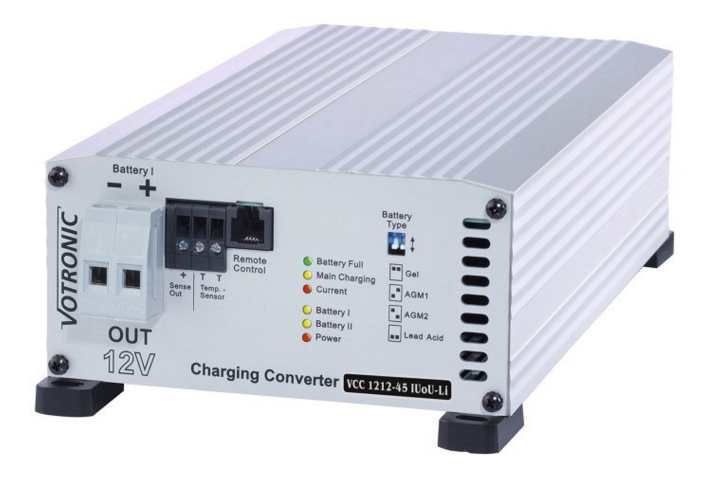
- Model VCC1212
- Price From 180 Euro
- Input current/reducible 24-90A; 50A/yes
- Characteristic curve, lead-acid battery IUoU
- Supported battery types Wet, AGM, Gel, LiFePo4
- Temperature sensor Battery
- Remote control/display Optional
- Activation D+, voltage
- Special features Voltage sensor
- Bidirectional charging No

